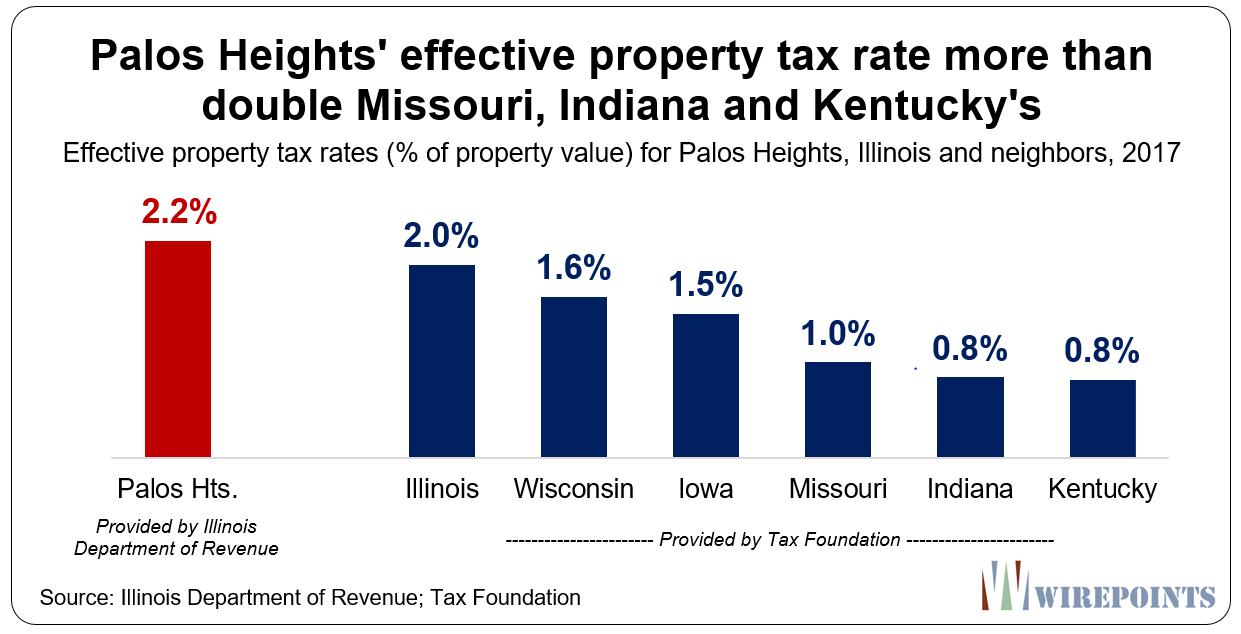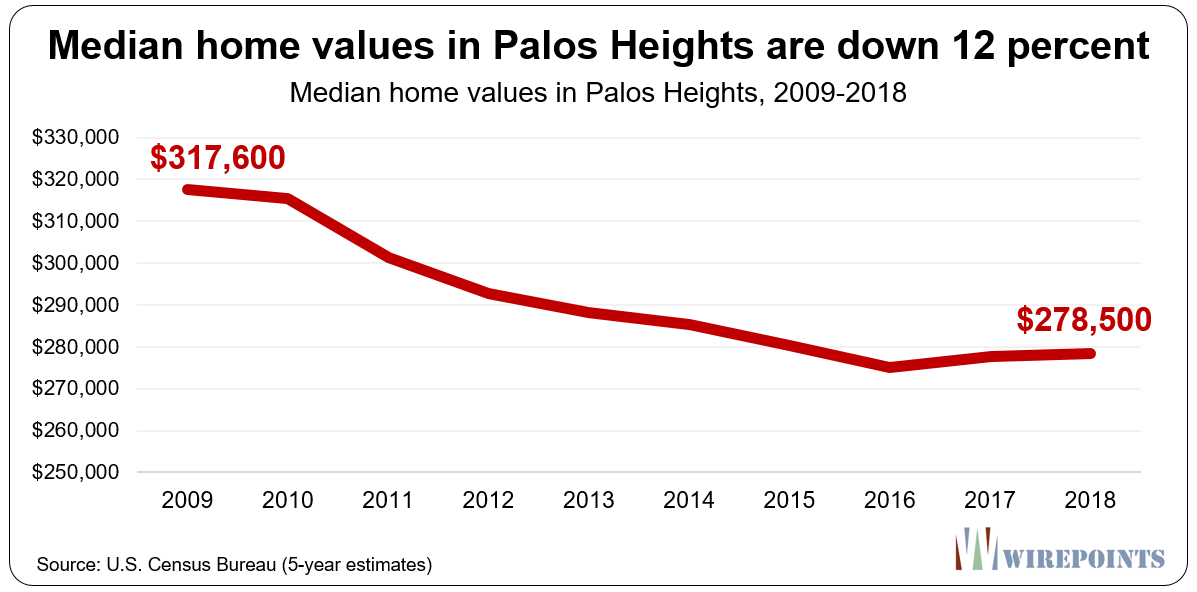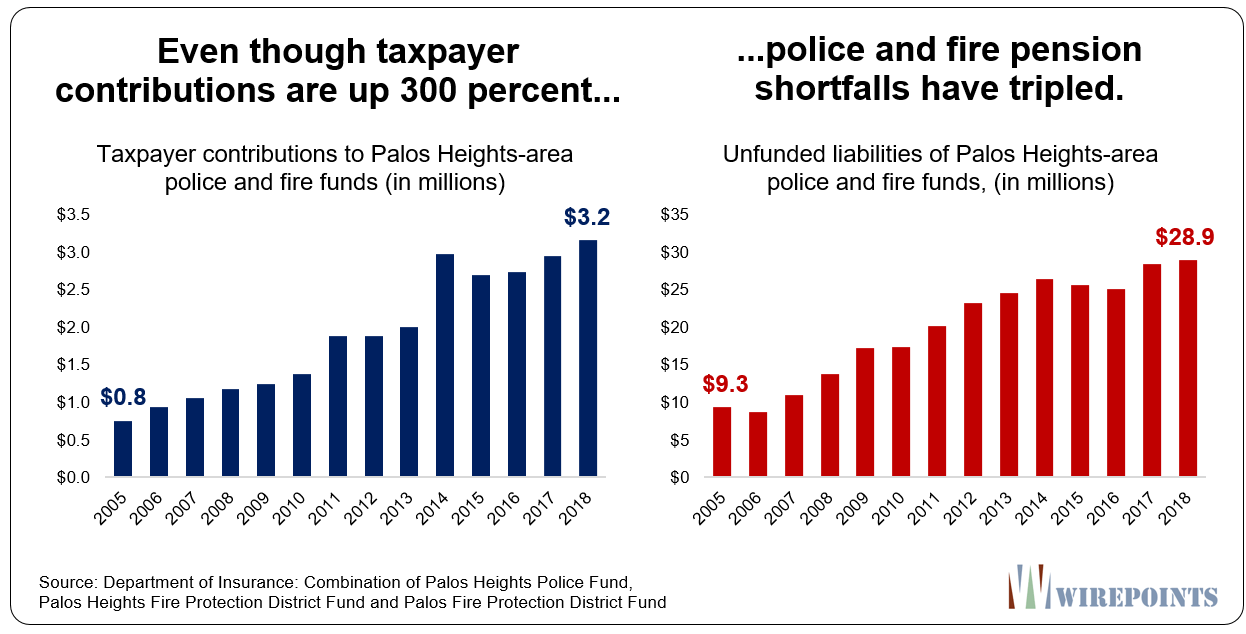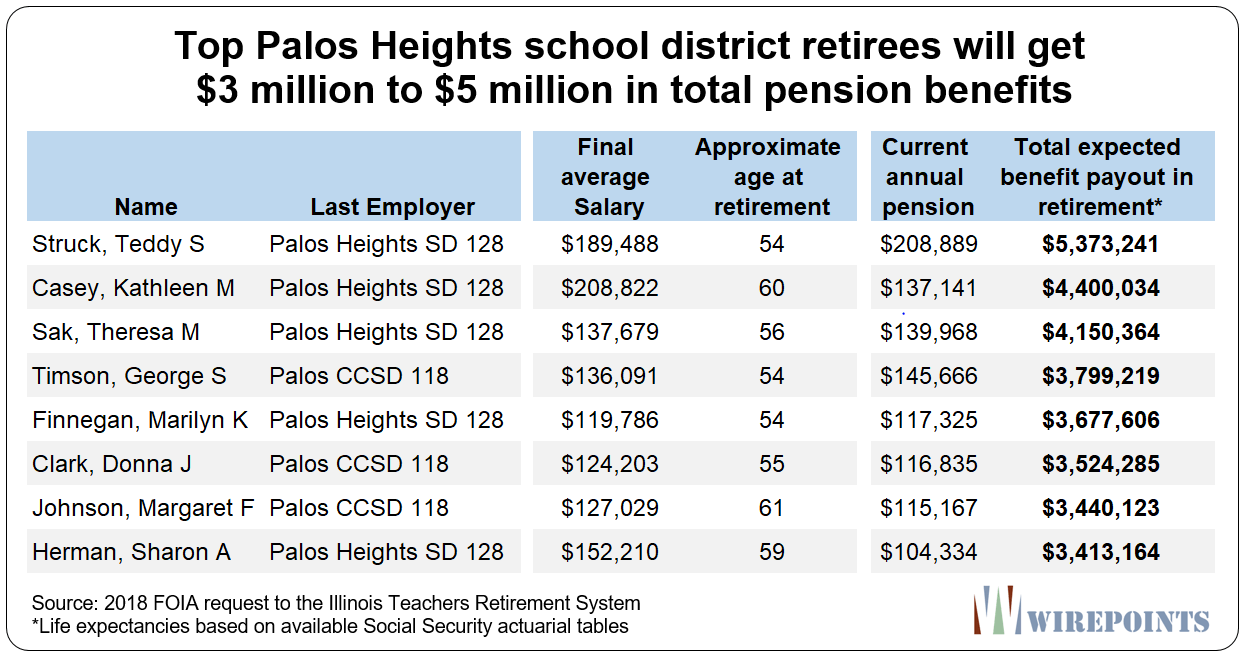By: Ted Dabrowski and John Klingner
The squeeze residents of Palos Heights, Illinois are feeling is the same as what’s playing out in communities across the state. Higher property taxes, falling home values and stagnant incomesare the fallout of Illinois’ burgeoning crisis.
The worsening situation has become increasingly obvious to the residents who live there. “I’ve had neighbors moving out, taking losses on their home,” a resident said at a Palos Heights gathering we attended recently.
.
Wirepoints was in the southwest Chicago suburb at the invitation of New Illinois, a nonpartisan group dedicated to creating a new state independent of the Chicago area. While Wirepoints doesn’t endorse New Illinois’ mission, we understand the frustration of its supporters, many who feel disenfranchised and forgotten by Illinois politicians.
After looking at the pain of those in Palos Heights and the refusal of Illinois politicians to fix anything, it’s no wonder some residents are looking for a fresh start.
The pain in Palos Heights
Property taxes were, of course, a sore spot for many of the attendees. Effective property taxes in Palos Heights are 2.2 percent. That’s higher than the state’s average and more than double what residents in neighboring Kentucky, Indiana and Missouri pay.
Several residents warned that the taxes they faced could drive them out of the community.
Dolores Kramarski, one of Palos Heights’ Aldermen said: “There’s a tax on everything. I’m very disappointed in this state. I was born and raised here. I thought I could retire here, but for the same amount of money I could have twice the home in Florida.”
And while not all city residents understand why their property taxes are so high, they certainly know there’s a problem. They’ve seen both their home values fall and their incomes stagnate at the same time.
Median home values in Palos Heights are still down 12 percent when compared to 2009, according to the U.S. Census. That’s bad compared to the rising home prices in states all around Illinois. Home values in Wisconsin are up 10 percent, while in Kentucky – the neighbor with the largest increase – they’re up 26 percent. And in Tennessee, where many Illinoisans now call home, home values are up 29 percent.
Incomes in Palos Heights haven’t done much better. Median private-sector earnings are up just 9 percent since 2005, not enough to even keep up with inflation, up 29 percent over the same period.
Residents have been forced to pay more taxes with less income, with some of what they pay going toward ever-higher public safety salaries. The average wage for public safety workers has grown 34 percent, to nearly $100,000 a year, over the past 13 years. Those increases are the result of guaranteed raises provided by the state’s union-friendly collective bargaining rules.
And those aren’t the only public sector salaries residents have to pay for. There are also superintendents with $200K-plus annual salaries that will turn into $6-million-plus in lifetime pension benefits when they retire.
A worsening crisis
What’s tough is that while taxpayers in the Palos Heights area are paying more and more money for their government, the crisis only seems to deepen.
Take public safety pensions. Despite a quadrupling of taxpayer contributions into the three local public safety funds since 2005, their unfunded liabilities have tripled to $29 million.
And at the state level, nothing is being done about multi-million-dollar pension benefits for teachers and district administrators. The top beneficiaries from Palos Heights two elementary school districts, for example, are expected to receive anywhere from $3 million to $5 million in pension benefits over the course of their retirements. The average, career teacher that has recently retired receives a starting benefit of $65,000 a year and can expect lifetime pension benefits exceeding $2.1 million.
The crisis across Illinois
Palos Heights residents are not alone in their troubles. A vast number of residents across the state experience the same pressures every day. They’re seeing their property taxes rise year after year. Their home values are stagnating or falling. Their neighbors are leaving. And the state and local pension debts they’re on the hook for continue to skyrocket.
With no relief in sight – politicians aren’t calling for a pension amendment, labor reforms, or a real reduction in the number of local governments – it’s no wonder that groups such as New Illinois are gaining traction with disaffected Illinoisans.
The separation movement’s influence is now big enough that Gov. J.B. Pritzker felt compelled to call them and their legislative sponsors out in his 2021 budget address: “Also, trying to separate Chicago from the rest of Illinois, whether rhetorically or literally, will not solve the economic challenges of downstate Illinois. Quite the opposite. Some of you need to stop pretending that one part of Illinois can exist without all the others. We are one Illinois.”
But the only thing Illinoisans have gotten from politicians is more taxes and higher fees. And now Gov. Pritzker and others want a progressive tax scheme.

That’s a bad idea, according to former State Sen. Patrick O’Malley, who attended the meeting. Though he now resides in Florida, the 2002 gubernatorial candidate emphatically told the crowd: “Anybody who says any tax increase is going to be constructive for Illinois truly doesn’t know the reality. There is no tax increase anybody in Illinois should vote for.”
Ald. Kramarski agreed. “Anybody who thinks any tax is going to be in their favor is sadly mistaken,” she said.
Pritzker seems content to dismiss the concerns of ordinary Illinoisans. In response, Illinoisans are either leaving the state – or looking for a way for the state to leave.
Even some Cook County residents are looking for a new Illinois – Wirepoints








Showing 1 reaction
Sign in with